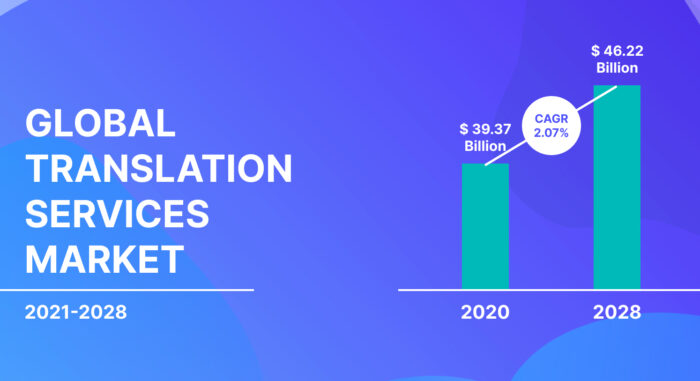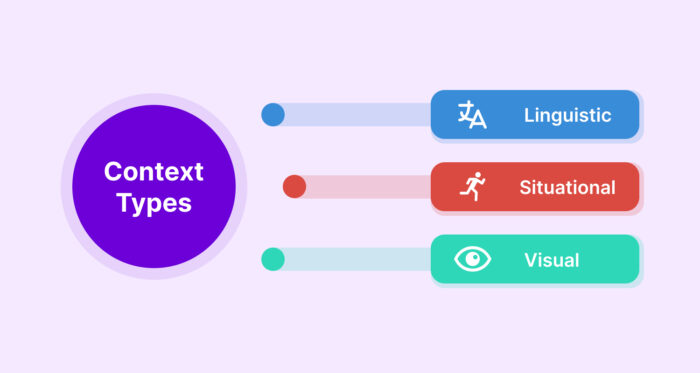You don’t often use the words crucial or vital when you talk to your friends about a topic that interests you, right? At the same time, in an academic text, you are more likely to choose these words instead of the simple important.
Why is this happening? It’s all about context. Different styles and types of texts require using certain words, and you need to be prepared for this. For example, technical texts are “dry” and neutral, with an abundance of technical vocabulary, while fiction is full of unusual wording and beautiful metaphors.
Let’s discuss the meaning of translation context and the purpose of using it in localization process. If you’re a professional translator, this article will help you deepen your knowledge in this field. If you’re planning to order a translation from a contractor, you’ll learn what you should pay attention to.
Accelerating globalization leads to an increase in demand for translation services to promote businesses in different countries. However, it’s not the quantity that matters the most, but the quality, and the context of the translation plays an essential role in this matter.

Different languages are deeply connected to different cultures, rules, and norms. Translating texts according to the same templates is wrong and sometimes even unethical. You should always consider the context to understand what words to use in the translation process and what the overall tone of the message should be. Only then will it be possible to create a translation that will have enough “nativeness” and will not raise questions among native speakers of the target language.
For example, in English, you can use the word you both for one person and several people. In French, these are different words(tu and vouz). In addition, the plural form vouz is also used to respectfully address one person. If these details are not taken into account, the translation may turn out unethical or simply incorrect.
Or, for example, the English word right. It can be translated either as “correct” or “opposite to left”. If you mistranslate the phrase “you’re right” or “turn right”, you can get something ridiculous or that just doesn’t make any sense. In some situations, this will be just fun, but in others, it can lead to difficulties (for example, if it’s a localized voice navigator).
A special area of localization is software translation. To do it well, it’s necessary to describe the product in detail to translators, give detailed comments, and even better, provide access to the test version of the software. Otherwise, a specialist can make significant mistakes just because they don’t understand critical aspects of the product.
Thus, context helps localizers and translators understand exactly what the text is about and what it is intended for.
Context is not only all the text that surrounds a particular word. These and other factors affect the translation. Let’s look at the main types of context that can change word usage and other aspects of localization.

This type of context can be compared to a glossary that contains all the necessary terms and phrases needed for an accurate translation. This context contains both special names and vocabulary. Thanks to the painstaking choice of words and phrases, the text becomes more suitable for any particular case.
Example: some specific words like fibromyalgia or doxycycline are almost always found in specific texts.
As for the situational context, the localizer must answer the question of where, when, and how the reader will receive the message and also what is behind it. For example, if a person receives a push notification while driving, it should be really short and simple. But if a person reads a fantasy book, then the translator can use the whole arsenal of metaphorical tools. This type of context can also be called social context since it’s closely related to interpersonal relations.
Example: you are more likely to use the word bold in a conversation with a friend, whereas impertinent or imprudent are more suitable for academic texts.
Most modern people perceive visual information best of all, and they do it at a very fast pace. Thus, for example, the translation of the text for a website should fit well into the interface (and don’t forget to highlight the key messages), and the advertising message should be very capacious and informative.
Example: in a translated website, you’re more likely to see buy instead of purchase and sale instead of the price has been reduced so that it looks short and dynamic.
As you can see, most translators first pay attention to the context to work effectively on texts. Here are some aspects they consider:
In order to correctly use context when working on localization, translators need specialized programs. They help to save the necessary information and use the experience of other specialists. Ordinary users can use these programs as well, for example, when learning languages or communicating with foreign friends. Modern CAT software features translation memory, machine translation, QA checks, and other opportunities so that your translation team or specialist can work efficiently.
One of the key tools for translators is concordance search. It’s present in most modern translation programs. It works like this:
Concordance search helps translation specialists to find the context of words in source and target languages. During the search, the program shows not only the required words but also the context that surrounds them in different parts of the text. Thus, the concordance search allows the translator to be sure of the quality of the translation.
Palex localization agency pays great attention to the quality of translation services and makes sure that translations correspond to the context: linguistically, situationally, and visually. We translate technical, legal, medical, marketing, and any other texts and work with 80 languages. If you need a quality translation, don’t hesitate to email us at [email protected]. We will be happy to provide you with a free estimate and discuss your localization project.






